Getting used to a prosthetic isn’t just about learning to walk or move again. It’s also about retraining your brain, rebuilding your confidence, and staying motivated through what can be a long and emotional journey. Traditional rehab can feel repetitive and frustrating. Many people lose interest halfway through. But now, something exciting is changing that — gamified rehab.
In simple words, gamified rehab means using game-like elements to make therapy feel more fun and engaging. It’s like turning your rehab exercises into something you want to do, instead of something you have to do. And it’s already making a huge difference for people with prosthetics across India and the world.
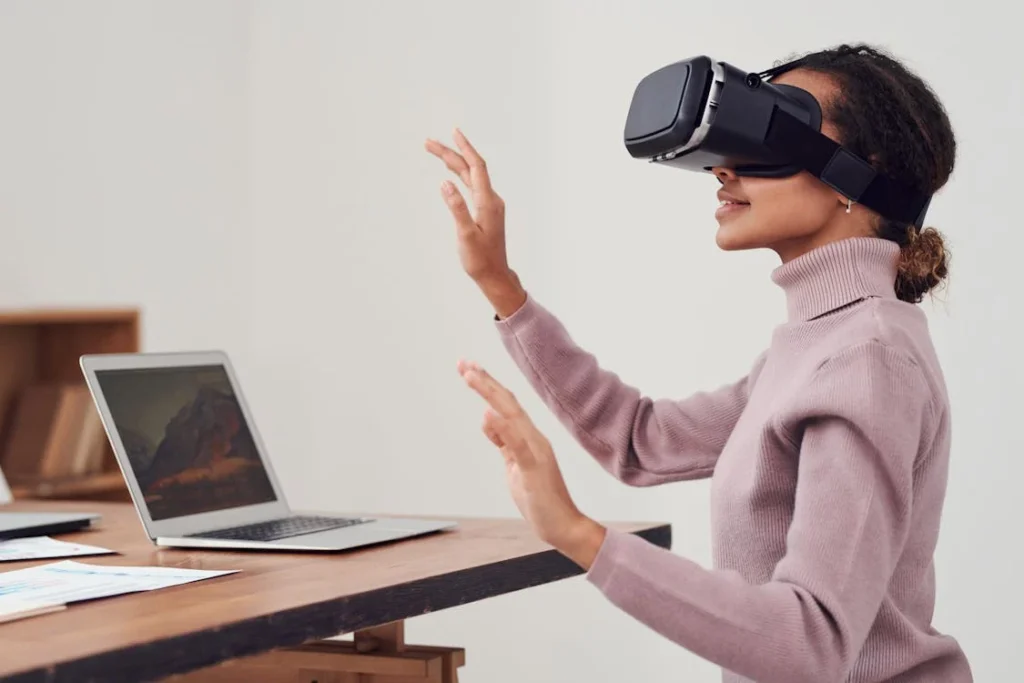
Why Motivation Matters in Prosthetic Rehabilitation
The Mental Challenge of Recovery
When someone loses a limb, the physical pain is only one part of the healing process. Emotionally, the journey can feel overwhelming. There’s grief, frustration, and often a deep sense of loss. Then comes the prosthetic — a new beginning, yes, but also a challenge in itself. Getting used to it involves repetitive exercises, long hours of therapy, and a constant push to relearn what once felt natural. That’s where motivation can start to dip.
Many people start strong. They’re eager to get back on their feet, to regain independence. But as the days go by, the exercises begin to feel boring. Progress can feel slow. Sessions become a chore. That loss of momentum can lead to skipped appointments, half-hearted effort, and even a halt in progress. And without continued effort, the benefits of the prosthetic can never fully be realized.
Traditional Rehab Isn’t Designed for the Brain
The human brain loves progress and variety. It craves rewards. Traditional rehab, while essential, often lacks these elements. It’s routine-based. You perform the same movements, over and over again, with little immediate feedback. There’s no scoreboard. No visible sense of achievement. Just another rep, another stretch, another balance drill.
For the brain, this lack of stimulation can feel exhausting. Especially when the body is already under strain. Over time, even the most disciplined individuals begin to disengage. That’s not because they don’t care — it’s because the process doesn’t speak to how our minds naturally stay engaged. And that’s where gamification brings in a powerful shift.
Gamification Isn’t Just Fun — It’s Neuroscience
Gamified rehab adds layers of interest and engagement by using game design elements like levels, challenges, rewards, and real-time feedback. But this isn’t just about fun. It taps into the brain’s dopamine system — the part that lights up when we win, achieve, or conquer something hard. That chemical reward keeps people coming back, keeps them focused, and turns repetition into reward.
Let’s say a patient needs to strengthen their upper limb to use a prosthetic arm better. Instead of lifting a bland object again and again, they could use a virtual environment where they ‘catch’ fruits falling from a tree by moving their arm in specific ways. Their scores go up, they see their name on a leaderboard, and suddenly, the movement isn’t a task — it’s a mission. That sense of purpose changes everything.
Gamification and Real-Life Prosthetic Control
What’s remarkable is how gamified rehab also helps fine-tune the connection between the brain and the prosthetic. Many modern prosthetic limbs, especially bionic ones, rely on EMG signals — electrical signals from muscles. Learning to control these signals isn’t just physical; it’s cognitive too. It’s about concentration, timing, and feedback.
Games offer the perfect environment for this. In a virtual setup, a user might control a digital hand that mirrors their prosthetic. The more accurately they move, the better their score. If they struggle with a particular motion, the system adjusts, giving feedback instantly. This kind of learning loop strengthens both neural pathways and confidence.
At Robobionics, we’ve seen firsthand how gamified rehab tools like these accelerate training. What once took weeks of repetitive, frustrating drills can now become a few focused, exciting sessions. And patients leave not just stronger, but more in control — of their limb, their mind, and their recovery.
The Emotional Boost is Just as Important
Beyond physical gains, gamified rehab brings something just as vital: emotional uplift. There’s a shift that happens when someone begins to look forward to therapy instead of dreading it. Smiles replace sighs. Sessions filled with laughter and challenge replace silence and strain. For someone who has gone through the trauma of amputation, this emotional lift can mean the difference between giving up and powering through.
Even family members notice the difference. Loved ones become part of the journey. They cheer on scores, celebrate levels unlocked, and encourage the daily grind because it no longer feels like one. Instead, it’s a shared adventure, full of small wins that keep building.
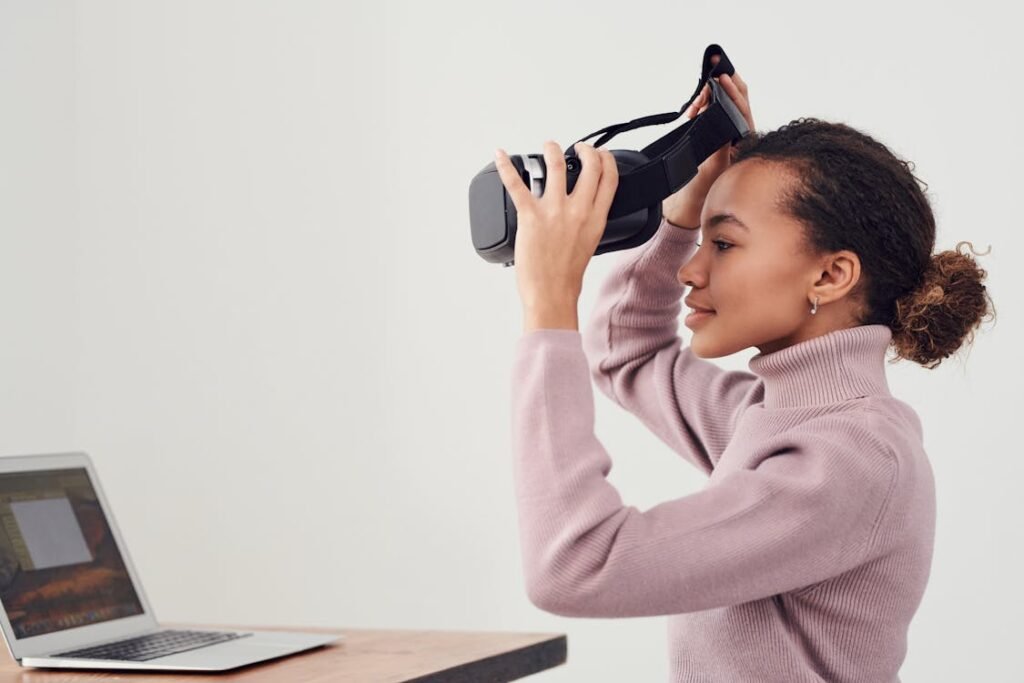
How Gamified Rehab Actually Works in Real-Life Prosthetic Recovery
From Therapy Rooms to Virtual Worlds
The shift from traditional physiotherapy to gamified rehab isn’t about replacing tried-and-true methods. It’s about enhancing them. In a typical prosthetic rehab program, patients would perform physical tasks like squeezing a ball, lifting objects, or walking across a straight line. These movements help with muscle memory, balance, and coordination. But they often lack context, purpose, or excitement.
Now, imagine entering a digital world — not just staring at a wall or a chart, but watching yourself in a virtual environment where your movements control an avatar. Every time you reach, bend, or lift, your actions are mirrored in a task-driven scene. Y
ou’re stacking boxes in a game warehouse, guiding a boat across a river by shifting your weight correctly, or practicing hand control by ‘planting’ seeds in a virtual garden. These aren’t just playful scenes — they are serious therapeutic tools, designed with input from doctors, game developers, and prosthetists.
These games don’t randomly entertain; they are carefully built around clinical needs. Each motion targets a specific muscle group or movement required to properly operate a prosthetic limb. Over time, as the user advances, the tasks get more complex. They require better control, stronger coordination, and quicker reaction times — all essential for real-world prosthesis use.
Personalized Challenges That Grow With You
One of the most powerful things about gamified rehab is how adaptive it can be. Everyone’s recovery journey is different. Some people may struggle with basic grip strength, while others need to improve balance. A one-size-fits-all therapy plan doesn’t work — and that’s where digital systems shine.
Gamified rehab tools collect real-time data. They can track how well you performed a movement, how long it took, and how smoothly it was done. Based on this feedback, the system can adjust the difficulty. If it notices you’re doing well, it can throw in more challenging obstacles. If it sees you’re struggling, it eases up just a bit, giving you time to catch up. This dynamic pace keeps people from feeling overwhelmed or bored.
And because the game adjusts to your pace, it doesn’t matter if you’re 14 or 64. The system grows with you. It never talks down to you, never gets frustrated. It just waits for you to play again — to try once more — and gently nudge you toward better performance.
Feedback That Builds Confidence, Not Confusion
In most rehab centers, therapists give verbal cues like “try again” or “lift a bit higher.” These are helpful, but they rely on memory and interpretation. With gamification, feedback is instant, visual, and objective.
If you’re moving too slowly, a light might flash red. If your hand shakes too much during a task, you’ll see the effect directly in the game. Maybe the tower you’re building collapses, or the digital fruit falls to the ground.
That kind of visual feedback builds a clear connection between effort and outcome. Patients begin to understand how small improvements lead to big changes. They start to spot patterns in their own movements.
They learn faster. And they don’t need to wait for a therapist to tell them they’ve done something well — they see it for themselves, in real time.
What’s more, many of these systems offer progress tracking. You can see a graph of how much better your range of motion has become, how your scores have climbed, or how your time to complete a task has dropped. That kind of progress isn’t just numbers — it’s proof. Proof that the hard work is paying off. And for someone recovering from a life-changing surgery, that proof can be a powerful motivator.
Bringing Families and Caregivers Into the Process
Recovery doesn’t happen in isolation. Often, it’s the family or a caregiver who helps book appointments, monitor routines, and keep spirits up. But traditional rehab can be hard for them to participate in. Watching a repetitive drill isn’t easy, and many caregivers don’t fully understand what’s happening or how to help.
With gamified rehab, the experience becomes more collaborative. Some systems offer multiplayer modes or remote monitoring, allowing family members to play along, track progress, or even coach. Imagine a child with a prosthetic hand playing a coordination game with their parent on a tablet at home. It turns rehab into family time. It strengthens bonds and reduces stress.
And for caregivers who want to feel more involved, gamification gives them tools. They no longer have to guess if their loved one is improving — they can see it. They can celebrate the highs and help through the lows. They become part of the journey in a more active, joyful way.
Bridging the Gap Between Therapy and Real Life
Perhaps the most exciting part of gamified rehab is how well it prepares users for everyday life. Traditional exercises don’t always mimic real-world actions. But in gamified setups, tasks are designed to reflect actual use cases — grabbing a bottle, climbing stairs, unlocking a door, or carrying groceries. Each virtual task strengthens a skill that translates directly into daily activities.
This real-life relevance makes the learning curve shorter. Patients begin to notice that their performance in games is helping them at home. Turning a doorknob no longer feels awkward. Cooking becomes easier. Typing on a phone with a prosthetic thumb doesn’t seem impossible anymore. These little wins stack up, and with each one, confidence grows.
That kind of confidence isn’t taught — it’s earned. And gamified rehab gives users the perfect training ground to earn it, one challenge at a time.
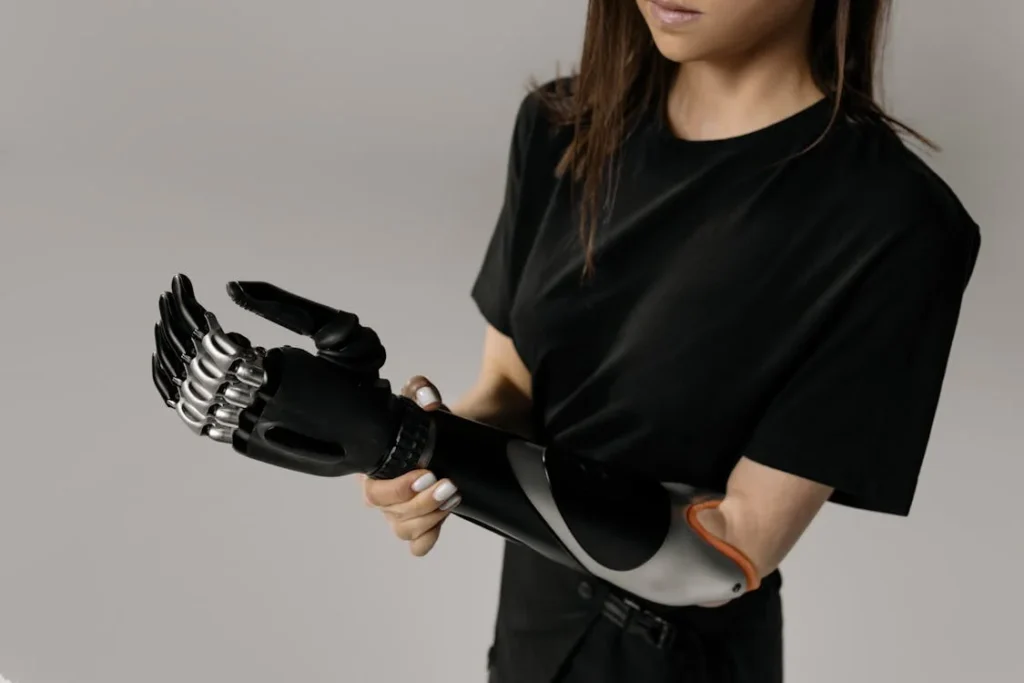
The Role of Technology in Making Gamified Rehab a Reality
Where Virtual Meets Physical
The heart of gamified rehab lies in one powerful idea — making therapy more human, more engaging, and more connected to daily life. But to bring this to life, we need smart technology. And over the past few years, the tech behind prosthetics and rehab has grown by leaps and bounds.
At the core of most gamified rehab systems is motion tracking. This allows the system to see how the user moves — in real-time — and respond accordingly. Some setups use simple webcams and sensors to track hand or body movement. Others are more advanced, using wearable sensors or EMG electrodes that detect muscle signals. These signals are then translated into actions in a game environment.
Let’s say someone is learning to use a myoelectric prosthetic arm. Small sensors on their skin detect tiny electrical pulses from their remaining muscles. These pulses are then mapped to movements in a game — maybe lifting a cup or moving blocks.
Every time the user makes a successful movement, the game responds, giving immediate feedback. If something goes wrong, they see what happened and try again. Over time, their control improves, not just in the game, but with the real prosthetic limb.
Prosthetic Devices and Smart Integration
Many modern prosthetic limbs now come with Bluetooth connectivity, internal sensors, and mobile app support. These tools don’t just help users customize grip strength or movement patterns — they also allow rehab systems to plug directly into the prosthetic. This deep integration creates a smoother, smarter rehab process.
For example, a gamified app might be directly connected to a robotic hand. As the user plays a virtual piano in the game, the hand learns to respond more naturally to subtle finger commands. At the same time, the user is having fun and developing muscle memory. This dual learning — by both the person and the prosthetic — accelerates adaptation and reduces training time.
Some rehab tools are even using augmented reality (AR) or virtual reality (VR) to create immersive environments. Imagine walking through a digital city while using your new prosthetic leg, climbing stairs, avoiding obstacles, and navigating traffic — all from a safe rehab room. These tools give users a chance to practice real-life scenarios in a controlled, risk-free way.
Data That Drives Personalised Therapy
One of the most underrated but powerful parts of gamified rehab is data. Every session produces insights: how long the user played, which movements they struggled with, where their performance dipped, and what helped them improve. This data is like a map — it shows where the user started, where they are now, and what the next step should be.
Therapists can use this information to tailor sessions more precisely. Instead of guessing which area needs focus, they can look at the data and say, “Let’s work on wrist rotation today,” or “Your grip control has improved by 20% — time to level up.” This kind of data-backed personalization ensures that no time is wasted. Every session counts.
At Robobionics, we’ve seen how even a few weeks of gamified rehab can deliver insights that traditional notes and verbal feedback simply can’t. When patients see their improvement laid out visually, they don’t just believe in the therapy — they believe in themselves.
Accessibility and Affordability in India
A big concern with new technologies is cost. Will it be too expensive? Will it be available only in high-end clinics? The good news is that gamified rehab is becoming more affordable every year — and more clinics in India are adopting it.
Some setups are as simple as using a smartphone and an app. These allow patients to continue rehab at home, with nothing more than a mobile device and their prosthetic. Other solutions may involve rehab centers with specialized screens, EMG tools, or motion capture cameras — still accessible, especially when supported by programs or hospitals.
What’s important is that gamification doesn’t require expensive VR headsets or futuristic robots to be effective. The core idea — making rehab engaging — works even with basic tools, as long as they’re used wisely.
Robobionics works closely with rehab centers, therapists, and hospitals across India to ensure these tools reach people in Tier 2 and Tier 3 cities too. Recovery should never be limited by geography or income. And with the right partnerships, gamified rehab is becoming a real option for thousands of amputees across the country.
Changing the Conversation Around Recovery
Technology often feels cold — screens, wires, circuits. But in gamified rehab, it becomes something deeply human. It responds to our needs, grows with us, and helps us heal not just physically, but mentally and emotionally.
By putting users at the center — letting them control the pace, the challenge, the outcome — gamified rehab offers something rare in medical recovery: a sense of agency. Patients aren’t just following instructions. They’re playing, improving, achieving. They become active players in their own healing story.
As the technology continues to evolve, we’ll see more intelligent systems, more adaptive games, and even AI that can coach, motivate, and adjust therapy in real-time. But the goal will always remain the same — to make recovery more empowering, more effective, and more human.

Rewriting the Identity of Recovery Through Play
Restoring More Than Just Movement
When someone begins prosthetic rehab, there’s a common focus on physical progress — how far can they walk, how strong is their grip, how stable is their balance. But what’s often overlooked is the transformation of identity.
Amputation, for many, can feel like a loss not just of a limb, but of self. The roles they once played — athlete, parent, dancer, professional — often feel out of reach. The mirror reflects someone different. And recovery becomes about rediscovering who they are in this new body.
This emotional rebuild is complex. It doesn’t come from doing ten repetitions of an arm lift. It comes from feeling capable again — in ways that feel real, exciting, and personal. Gamified rehab taps directly into this hidden layer. It doesn’t just rebuild physical ability — it helps restore identity through stories, actions, and even a sense of adventure.
Rehab That Tells a Story
Many gamified systems now use narrative design — that is, the user progresses through a story as they complete tasks. Instead of “do this movement 15 times,” the user is told, “You are a pilot navigating through stormy skies — use your prosthetic hand to steer the plane.” Or “You’re on a mission to light up a village — power the generators by performing precise movements.” Suddenly, you’re not just exercising. You’re the hero of your own recovery.
This story-based format gives people something to look forward to. It creates context. And context builds meaning. Patients begin to associate movements not just with muscles, but with goals. Each session becomes a chapter, and every breakthrough — even something as simple as raising an arm fully — becomes part of the narrative arc.
For children especially, this is transformative. Rehab no longer feels like a punishment for being “different.” It becomes play. Imagination takes over. They stop seeing the prosthetic as a reminder of loss and begin to see it as a tool — or even a superpower.
Creating Safe Spaces to Fail and Grow
Failure is a natural part of rehab. You try, you fall, you try again. But in real-world rehab environments, failure can feel exposed. You’re in a clinical setting, people are watching, and it’s easy to get embarrassed. That fear of looking weak can cause people to hold back — to avoid effort because it might end in disappointment.
Gamified rehab changes this dynamic. Inside a game, failure doesn’t feel like a setback. It feels like learning. If you drop the digital fruit or miss the target, the screen resets, and you try again — no judgment, no shame. This psychological safety is crucial, especially for people rebuilding confidence after trauma.
In this space, users are more likely to push themselves. They take risks. They test their limits. And every time they fail and try again, they reinforce a mindset of resilience. Over time, this builds not just strength, but character. People begin to think, “If I can do this here, maybe I can do more out there too.”
The Power of Autonomy and Ownership
One of the most subtle but powerful benefits of gamified rehab is control. In traditional therapy, patients often feel like they’re being led — told what to do, when to do it, and how. While guidance is necessary, too much of it can remove the feeling of autonomy. And after a major life event like amputation, regaining that sense of control becomes even more important.
Gamified rehab puts control back into the patient’s hands. They choose when to play, how to pace themselves, and which challenges to take on. The games are built to be self-directed. This independence fosters ownership. The patient is no longer a passive recipient of therapy — they’re the driver.
And this matters more than we think. Ownership increases commitment. When people feel like they’re in charge of their own progress, they care more. They show up. They go further. They begin to reclaim not just their physical ability, but their independence.
From Patient to Player to Champion
Perhaps the most beautiful transformation in gamified rehab is the shift in identity — from “patient” to “player.” That subtle change reframes the entire journey. Players aren’t weak. They’re curious, determined, adaptable. They see obstacles as part of the game — not the end of the road.
This shift lifts people out of the mindset of injury or illness and repositions them in a place of strength. And when the rehab ends — when the therapy sessions are fewer and daily life returns — what stays is the mindset. The resilience. The belief that even hard things can be approached with creativity, playfulness, and persistence.
At Robobionics, we believe that prosthetics are more than machines. They are tools of empowerment. But tools alone aren’t enough. The way someone feels about themselves as they learn to use that tool is just as important. Gamified rehab doesn’t just teach the body how to move — it teaches the mind how to believe again.
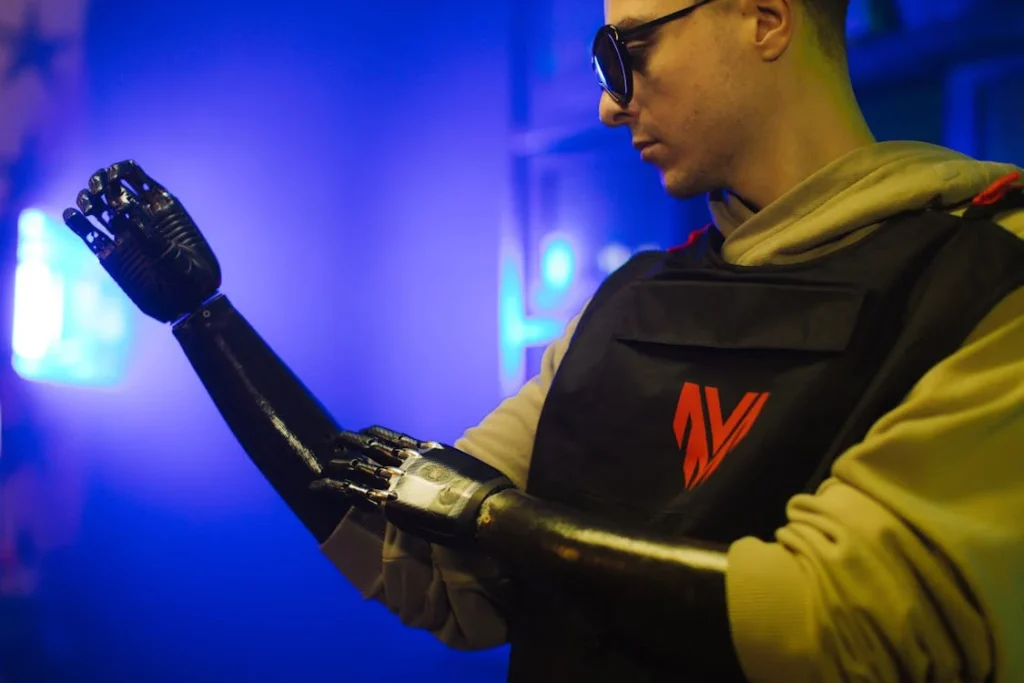
How Gamified Rehab Is Changing the Role of the Therapist
From Instructors to Experience Designers
In traditional prosthetic rehabilitation, the therapist plays a very direct, hands-on role. They guide the exercises, correct movement, motivate the patient, and ensure safety. The flow of each session depends heavily on the therapist’s real-time input and judgment. But with the introduction of gamified rehab, this dynamic is evolving in an exciting way.
Therapists are no longer just instructors — they’re becoming experience designers. Their role is shifting from simply demonstrating exercises to crafting recovery journeys. Using data from rehab games, therapists now curate personalized game plans for each patient. They analyze performance metrics, identify motor challenges through gameplay data, and adjust the environment accordingly.
Rather than repeating the same routine for every patient, therapists can now design unique “levels” based on a user’s pace, physical ability, and mood. This personalization creates more meaningful sessions — both for the therapist and the patient. Instead of pushing someone through another set of static reps, they’re unlocking new game scenarios, achievements, or challenges. It’s less about supervision and more about creative strategy.
Smarter Feedback, Faster Adjustments
In the past, therapists often relied on manual notes or memory to track a patient’s progress. They’d observe movement, ask questions, and base their adjustments on feedback and visible improvement. But these methods could miss subtle changes — a small hesitation in grip, a slight imbalance, or an inconsistency in control.
Now, thanks to integrated tech, therapists get real-time performance dashboards. They can see exactly how long it took someone to complete a task, how accurate their movements were, how often they lost balance, or even how consistent their reaction times are. This shift removes guesswork. It empowers therapists with a more scientific view of recovery.
And with that data, they can make fast, focused changes. If a game is too easy, they raise the difficulty on the spot. If a particular muscle group is lagging, they adjust the challenges to emphasize that motion. Each decision is based on live, concrete evidence — not assumptions.
This makes sessions more efficient. More gets done in less time. Patients feel the progress instantly. And therapists have more mental space to focus on motivation, encouragement, and connection — the human side of healing.
Therapists as Motivators and Mentors
With gamification handling much of the repetition and feedback, therapists can focus more deeply on what machines can’t replicate: emotional connection. They become motivators, mentors, and cheerleaders. They help patients navigate mental blocks, frustration, and fear of failure.
This emotional support is critical. Many patients dealing with limb loss carry hidden weight — anxiety, self-doubt, even shame. Therapists, in this new role, are freer to address those emotions, to speak openly, and to help patients reframe the recovery experience.
Instead of just saying, “Do five more,” they can ask, “How did that feel when you hit the goal?” or “What’s your strategy for this next challenge?” These kinds of questions shift the dynamic from instruction to collaboration. The therapist becomes a partner in play, not just a figure of authority.
And in this new relationship, trust grows. Patients feel seen, heard, and supported. They’re not just following orders — they’re co-creating their recovery with someone who understands the science, the struggle, and the potential.
Helping Build Long-Term Independence
Another powerful change is how gamified rehab allows therapists to plan for independence right from the beginning. In the traditional model, rehab was clinic-based. Progress was tied closely to physical visits. If the patient missed sessions or the therapist wasn’t available, rehab stalled.
With gamified tools, many exercises can be done at home — safely, accurately, and with continued progress tracking. Therapists now focus on teaching patients how to use these systems outside of appointments. They set goals, check progress remotely, and step in only when needed.
This fosters a powerful shift in mindset. Recovery isn’t something that happens only in a clinic. It becomes a daily habit, a self-driven mission. And the therapist’s role transitions from constant monitor to trusted coach.
The patient learns to own their rehab. They know how to adjust their own settings, interpret their data, and track their progress. They no longer need to be told what to do — they know how to steer their own ship.
Training the Next Generation of Rehab Experts
As gamified rehab becomes more mainstream, therapists are also facing a new responsibility: retraining themselves. This isn’t about learning to play games — it’s about learning new digital tools, data interpretation, and virtual engagement techniques. It’s about becoming fluent in both therapy and technology.
The best therapists of the future will be hybrid experts — part clinician, part digital strategist, part storyteller. They’ll know how to read between the lines of a data chart and the body language of a frustrated patient. They’ll know how to make a session feel like a challenge instead of a chore.
Robobionics is actively supporting this shift. We work with therapists across India to help them train on gamified platforms, interpret rehab analytics, and design better, more human-centric programs. Because the future of recovery isn’t just about smart tools — it’s about smart people who know how to use them with heart.
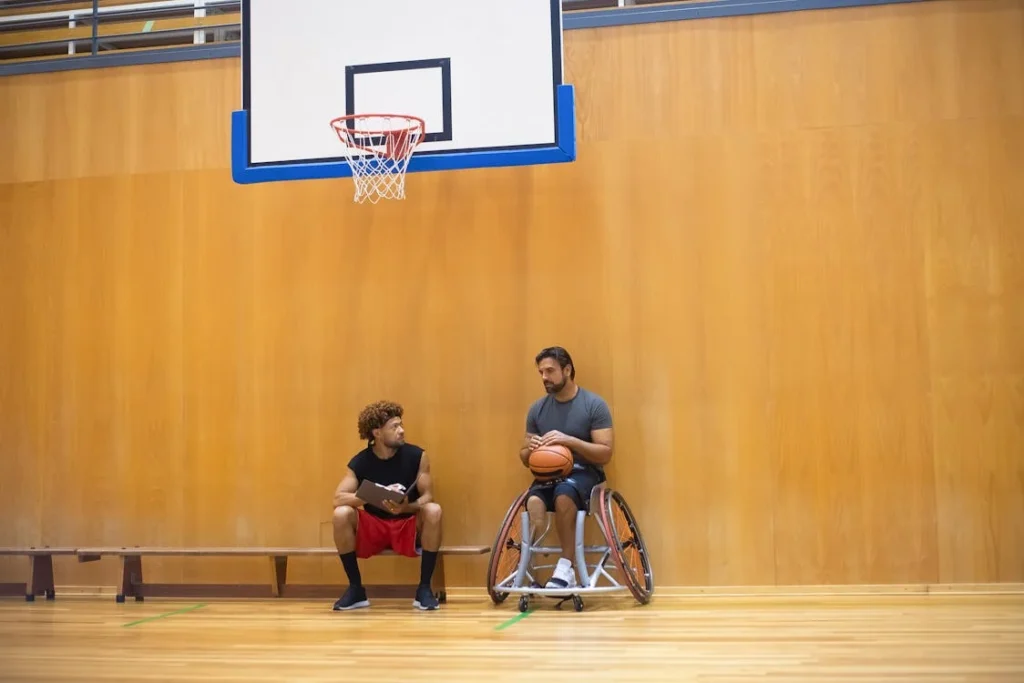
How Gamified Rehab Builds Community and Social Support for Prosthetic Users
Rehab Is No Longer a Solo Journey
One of the most isolating parts of life after an amputation is the sense of being alone in the experience. While family and friends may offer love and support, very few truly understand what it feels like to relearn basic actions with a prosthetic limb. Traditional rehab, done in silence or one-on-one settings, often reinforces this isolation. It’s just the patient, the therapist, and the routine.
Gamified rehab changes this in a profound way by introducing shared experiences into the process. When recovery happens through games, it becomes inherently social. Games are designed to be watched, talked about, and played together — and that creates an entirely new social layer within rehab environments.
Patients begin talking about their high scores. They share tips on how to beat a level. They cheer for each other. They joke about their virtual failures and celebrate small wins. What was once a lonely, clinical task transforms into a chance to connect. In this space, people no longer feel like patients — they feel like part of a team.
Peer Motivation Through Cooperative and Competitive Play
Modern gamified rehab platforms are starting to include multiplayer modes — setups where two or more patients can play together or against each other. In some cases, a physical therapy room might have two users with prosthetic arms working through the same challenge, side-by-side. Their screens may show the same digital environment, and they must work together to solve problems or race to complete tasks faster.
This structure naturally creates accountability. If you know someone else is showing up and putting in the work, you’re more likely to do the same. If you’re one level behind your rehab buddy, you may push yourself to catch up. Friendly rivalry becomes a tool for commitment. The peer support is subtle but powerful — it’s not about who’s better, but about pushing forward together.
Even in virtual-only setups, some platforms allow users to see global or local leaderboards. Knowing that others are out there, training just like you, can be deeply motivating. It breaks the illusion of isolation. You’re not the only one struggling with wrist movement or balance — hundreds of others are on the same path, at different stages, and that truth is deeply comforting.
Support Groups That Emerge from Play
One of the beautiful consequences of shared gamified rehab is the emergence of organic support groups. People who play together naturally begin to talk — not just about the game, but about life with a prosthetic. They swap stories about challenges at home, about using the limb in daily situations, about emotions and fears and progress.
In rehab centers where gamified systems are central, therapists have noticed that patients begin staying longer — not because they need more time to finish exercises, but because they want to connect with others. Coffee chats form after sessions. Phone numbers are exchanged. Community is born.
These informal support systems fill a vital gap. While medical teams are there for clinical needs, peers are there for emotional ones. They share tips you don’t find in manuals — how to deal with stares in public, how to manage skin irritation under a prosthetic socket, how to build confidence before returning to work. These are lessons that can only come from shared experience, and gamified rehab makes that sharing easy, natural, and judgment-free.
Family and Friends Become Co-Players, Not Just Observers
Another major social shift brought about by gamified rehab is how it involves non-clinical partners — the people at home. Instead of sitting passively in waiting rooms or watching rehab sessions from a corner, family members can now join in the process.
Some gamified platforms include home-based modes where parents, siblings, or partners can “co-play” games designed for the prosthetic user. Maybe it’s a balancing game played in tandem. Or a rhythm game where one player’s actions depend on the other’s movements. These interactions aren’t just playful — they reinforce emotional bonds and offer deep support.
Playing together changes how people see each other. Instead of feeling helpless watching a loved one struggle, family members get to participate, to encourage, to be part of the healing. It transforms the tone of recovery from clinical to communal.
At Robobionics, we’ve seen families report how much more connected they felt once gamified tools were introduced. One mother in Noida told us, “I never knew how to help my son until we started playing together. Now we laugh, we compete, and I see him getting better without even realizing how much work he’s doing.”
Reinforcing a Positive Identity Through Community Recognition
Social play isn’t just about bonding — it’s also about recognition. When others see and celebrate your progress, it reinforces a sense of value and identity. In traditional rehab, recognition comes from the therapist, maybe once or twice a week. In gamified rehab, it can come daily — from peers, from digital rewards, from family, from leaderboards, from mentors.
This constant positive feedback creates a loop of reinforcement. Every time someone says, “You crushed that level!” or “You’re moving so much smoother than last week,” it affirms the patient’s progress — not just to others, but to themselves.
And perhaps most importantly, this feedback loop helps patients redefine themselves — not as someone who’s “recovering from amputation,” but as someone who is growing, learning, and succeeding. Not just a survivor, but a player, a leader, and eventually, an inspiration to others entering the rehab journey behind them.
Conclusion
Gamified rehab isn’t a gimmick — it’s a revolution. By turning repetitive exercises into immersive, rewarding experiences, it transforms how people adapt to life with a prosthetic. It empowers users not just to move, but to believe in their movement. It helps therapists become more strategic, families more involved, and patients more confident.
At Robobionics, we believe that recovery should never feel like punishment. It should feel like growth, exploration, and progress — on your terms. Gamified rehab brings emotion, community, and science together to make that possible. It turns therapy into a journey worth waking up for.
Because when you turn recovery into a game, healing doesn’t just happen faster — it happens with joy, purpose, and strength.



